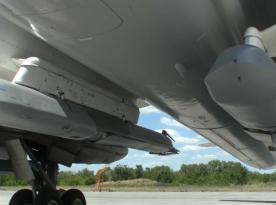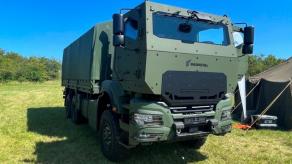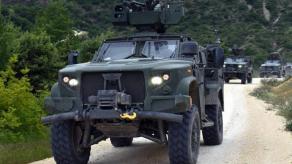The Ukrainian Defense Forces executed a successful long-range drone strike on the NPO Tayfun military plant in Kaluga, located over 290 kilometers from the Ukrainian border. The attack resulted in significant destruction at the facility, with video evidence showing damaged infrastructure and tanks containing oil products located nearby. Despite attempts by Russian air defense to intercept the drones, the strike proved effective.
Ukrainian drones attacked Kaluga overnight, hitting the Kaluganaftoprodukt oil refinery. Oil tanks can be seen burning from far away. In addition to the oil tanks, Ukrainian drones reportedly also attacked the Typhoon plant, which is part of Russia's military-industrial complex.… pic.twitter.com/9wkoJ4yX5m— NOELREPORTS (@NOELreports) November 25, 2024
NPO Tayfun, also known as the Kaluga Instrument-Making Plant Typhoon, is sometimes described as a run-of-the-mill manufacturer of radio-electronic equipment but is in fact a powerful military industry enterprise with over 2,000 personnel of staff. The plant's forte is systems for coastal defense missile complexes, making it a strategically important target.
Read more: If Ukraine Produces Several Ballistic Missiles, Rampage for MiG-29 and Lora for F-16 Should Be Considered

The facility's key products include components for the Bal coastal defense missile system, which deploys Kh-35 anti-ship missiles, more specifically command posts and communication units. It also produces the Monolit-B reconnaissance station for the Bastion system (Oniks missile), capable of detecting targets up to 450 kilometers away.
Both coastal defense complexes have been repurposed by russian forces to strike Ukrainian cities in alternative firing modes rather than fulfilling their intended role of repelling naval threats.

Additionally, NPO Tayfun serves as the final assembly site for the Rubezh-MÈ coastal missile system, marketed as a lightweight counterpart to the Bal system and using the same Kh-35 missiles. The Rubezh-MÈ was even promoted as a competitor to Ukraine’s Neptune missile system but garnered little attention abroad.

The name "Rubezh-MÈ" is a quite obvious attempt to leverage the legacy of the famous Soviet-era Rubezh system utilizing Termit missiles. The plant was involved in its creation as well. The system was exported to over 10 countries, and still remains in service with Syria, Vietnam, and Cuba.

Beyond coastal defense systems, the Tayfun plant also manufactures shipborne radars. One example is the Positiv radar used on Project 11356R Burevestnik frigates, aka the Admiral Grigorovich class, which are armed with Kalibr cruise missiles. In addition, the plant produces ship-based electro-optical systems, power supply systems, and other critical components for marine and coastal weaponry.
Read more: First Drone is the "Hooligan": Insights on Magura V5 Tactics and Specifications From Commander 13th














